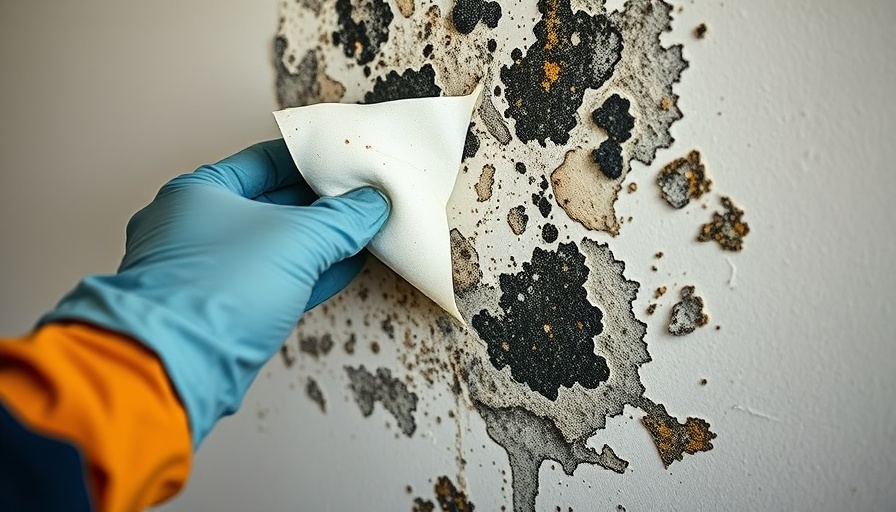
A Guide to Detecting Mold in Your Home
For homeowners, the presence of mold can be more than just a nuisance; it can pose health risks and damage property. Mold spores thrive in damp environments, and when they infiltrate your home, they can exacerbate allergies and trigger respiratory issues. Recognizing how to test for mold effectively can help you maintain a safe and healthy living environment.
Understanding Mold: Health Risks and Beyond
Mold is not just unsightly; it can have serious health implications. According to the Centers for Disease Control and Prevention (CDC), exposure to mold can lead to a variety of health problems, particularly in individuals with asthma or weakened immune systems. Understanding these risks validates the need for regular mold assessments in your home.
DIY Mold Testing: Simple Steps to Follow
Conducting a mold test in your home doesn’t need to be a daunting task. Start by identifying damp spots in your home, often located in areas like basements, bathrooms, and around plumbing fixtures. Look for visible mold growth, often appearing as green or black patches.
If you suspect mold but don’t see it, there are DIY mold testing kits available at home improvement stores. These kits typically include petri dishes and instructions for capturing air samples. Follow the directions closely to ensure accurate results.
When to Call the Professionals
While DIY methods can give you a preliminary insight into mold presence, enlist professional mold inspectors for a thorough evaluation if you discover any significant signs of mold. Professionals can utilize advanced methods, including infrared cameras and air quality testing, to detect mold infestation, even in hidden areas.
The Importance of Prevention: Keeping Your Home Mold-Free
Preventing mold is far easier than eradicating it. Ensure adequate ventilation in your home, especially in bathrooms and kitchens. Utilizing dehumidifiers in moist climates can also help control humidity levels. Regularly inspect your home for leaks, and promptly address water damage to curb future mold growth.
Community’s Role in Mold Awareness
Engaging in community awareness around mold can spread valuable information. Local community workshops or home improvement classes can equip homeowners with knowledge about maintaining healthy indoor environments. Sharing resources or personal experiences can foster a united front against common household challenges such as mold.
By staying proactive, you can ensure your home remains a safe haven for you and your loved ones. For more tips on maintaining a healthy household, consider reaching out to local home improvement experts or reading more articles on home improvement tips.
 Add Row
Add Row  Add
Add 




Write A Comment